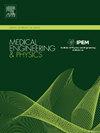通过连续血糖和体力活动监测以及深度学习,实现精确、个性化血糖预测的平台
IF 1.7
4区 医学
Q3 ENGINEERING, BIOMEDICAL
引用次数: 0
摘要
新近的研究表明,在人工胰腺和糖尿病管理中使用连续葡萄糖监测具有优势。最近的研究表明,利用深度学习预测葡萄糖水平有助于避免人工胰腺因延迟或增加胰岛素剂量而导致餐后高血糖(≥ 180 mg/dL)或低血糖(≤ 70 mg/dL)。本文介绍了一种新颖的混合深度学习框架,该框架整合了基于内容的注意力学习,可根据过去的数据有效预测 T1D 和 T2D 患者在预测视野(PH)= 15、30 和 60 分钟内的血糖测量值。我们还介绍了一个完整的基于云的系统和移动应用程序,用于收集 CGM 传感器、体力活动数据、CHO 值和胰岛素测量值,从而使用在云上运行的建议模型进行血糖预测。该模型使用 1 型糖尿病患者(OhioT1DM)和 2 型糖尿病患者的临床数据进行了验证。在 OhioT1DM 临床数据集上,PH=60 和 30 分钟的平均绝对相对误差(MARD)分别为 12.33±3.15%和 7.14±1.76%。在同一临床数据集上,PH=60 和 30 分钟的均方根误差(RMSE)分别为 29.41±5.92 mg/dL 和 17.19±3.22 mg/dL,平均绝对误差(MAE)分别为 21.96±4.67 mg/dL 和 12.58±2.34 mg/dL。据观察,加入体育锻炼可提高血糖预测的准确性。此外,所有这些结果都是通过对单个患者 8 天的临床数据进行模型训练,然后对随后几天的临床数据进行测试得出的。结果表明,与现有研究相比,在单个患者数据上进行训练可能会带来更好的个性化和更好的血糖预测结果。本文章由计算机程序翻译,如有差异,请以英文原文为准。
Platform for precise, personalised glucose forecasting through continuous glucose and physical activity monitoring and deep learning
Emerging research has demonstrated the advantage of continuous glucose monitoring for use in artificial pancreas and diabetes management in general. Recent studies demonstrate that glucose level forecasting using deep learning can help avoid postprandial hyperglycemia (≥ 180 mg/dL) or hypoglycemia (≤70 mg/dL) from delayed or increased insulin dosing in artificial pancreas. In this paper, a novel hybrid deep learning framework with integration of content-based attention learning is presented, to effectively predict the glucose measurements with prediction horizons (PH) = 15, 30 and, 60 minutes for T1D and T2D patients based on past data. We also present a complete cloud-based system and mobile app used for collecting CGM sensor, physical activity data, CHO values and insulin measurements to perform glucose forecasts using the proposed model running on Cloud. This model was validated using clinical data of individual with Type 1 diabetes (OhioT1DM) and individual with Type 2 diabetes. The mean absolute relative difference (MARD) was 12.33±3.15, 7.14±1.76% for PH=60 and, 30 min respectively on OhioT1DM clinical Dataset. The root mean squared error (RMSE) was 29.41±5.92 mg/dL and 17.19±3.22 mg/dL and the mean absolute error (MAE) was 21.96±4.67 mg/dL and 12.58±2.34 mg/dL for PH=60 and, 30 min respectively on the same clinical dataset. It was observed that inclusion of physical activity leads to improved glucose forecasting accuracy. Furthermore, all these results were obtained by training the model on only 8 days of clinical data of a single patient, followed by testing on clinical data on the following days. The results indicate that training on a single patient data may lead to better personalisation and better glucose forecasting results compared to existing works.
求助全文
通过发布文献求助,成功后即可免费获取论文全文。
去求助
来源期刊

Medical Engineering & Physics
工程技术-工程:生物医学
CiteScore
4.30
自引率
4.50%
发文量
172
审稿时长
3.0 months
期刊介绍:
Medical Engineering & Physics provides a forum for the publication of the latest developments in biomedical engineering, and reflects the essential multidisciplinary nature of the subject. The journal publishes in-depth critical reviews, scientific papers and technical notes. Our focus encompasses the application of the basic principles of physics and engineering to the development of medical devices and technology, with the ultimate aim of producing improvements in the quality of health care.Topics covered include biomechanics, biomaterials, mechanobiology, rehabilitation engineering, biomedical signal processing and medical device development. Medical Engineering & Physics aims to keep both engineers and clinicians abreast of the latest applications of technology to health care.
 求助内容:
求助内容: 应助结果提醒方式:
应助结果提醒方式:


